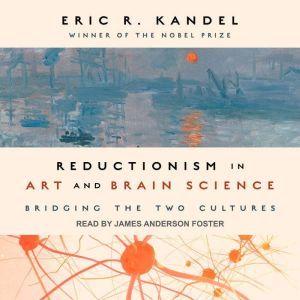

Reductionism in Art and Brain Science
Bridging the Two Cultures
Author: Eric R. Kandel
Narrator: James Anderson Foster
Unabridged: 4 hr 1 min
Format: Digital Audiobook Download
Publisher: Tantor Media
Published: 01/30/2018
Categories: Nonfiction, Art, Psychology, Cognitive Psychology & Cognition, Science, Life Sciences
Synopsis
In Reductionism in Art and Brain Science, Kandel shows how this radically reductionist approach, applied to the most complex puzzle of our time—the brain—has been employed by modern artists who distill their subjective world into color, form, and light. Kandel demonstrates through bottom-up sensory and top-down cognitive functions how science can explore the complexities of human perception and help us to perceive, appreciate, and understand great works of art.


